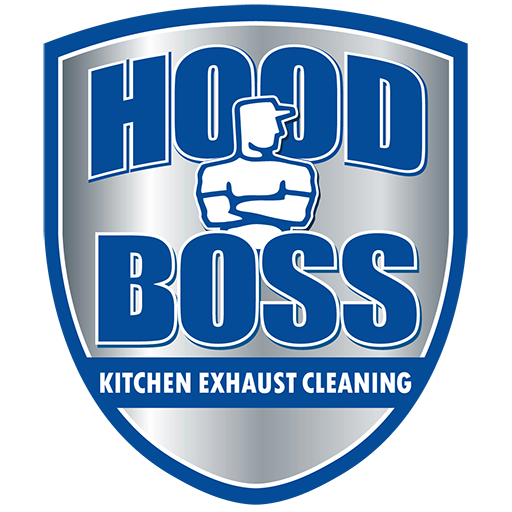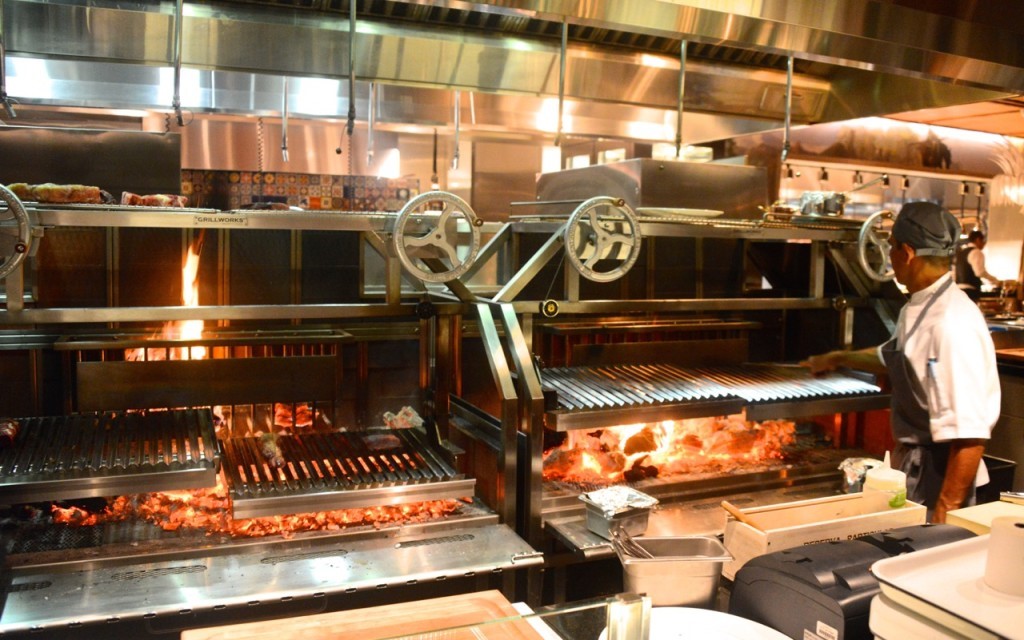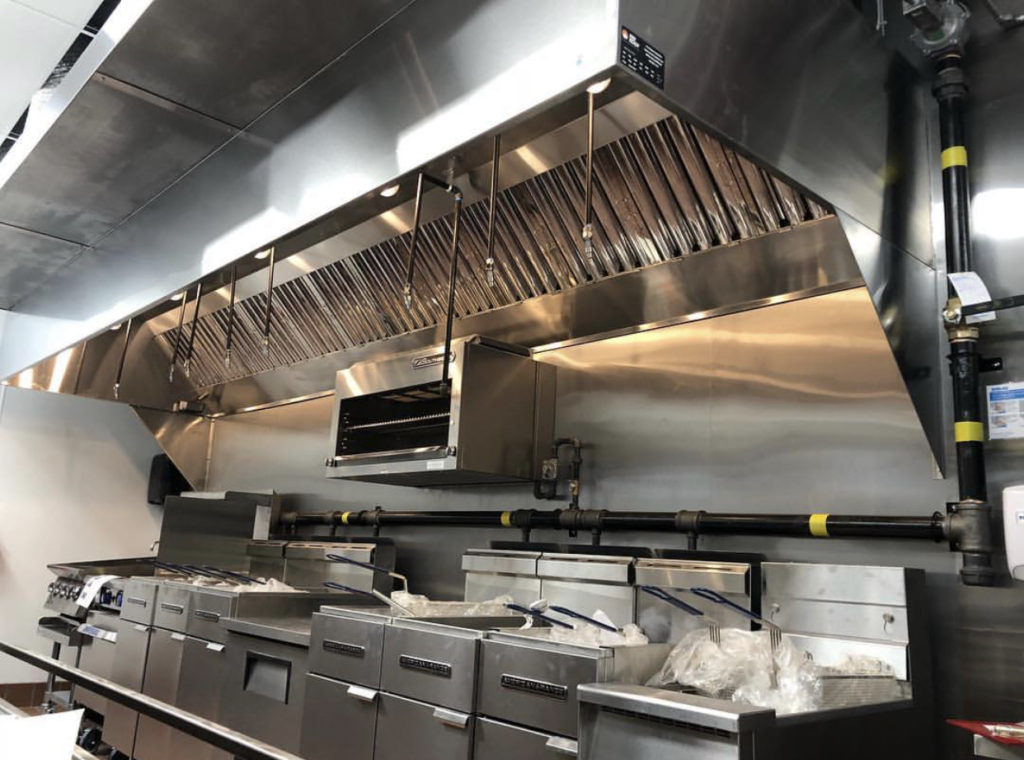Cooking with solid fuel such as mesquite, charcoal and other hardwood adds another dimension to restaurant offerings. Wood fired ovens, smoker pits, and wood burning /charcoal grills allow restaurants a wider array of flavor and cooking capabilities. Solid fuel appliances also have the potential for increased safety risks.
Restaurants that use solid fuel cooking methods generate a large amount of heat and grease, especially when cooking meat. Anytime a solid fuel burning appliance is used, creosote is deposited in the exhaust system or flue. Creosote is highly flammable and creates the biggest potential hazard when using such an appliance. Creosote has three stages. As each stage increases, they become more hazardous and are increasingly difficult to remove from the exhaust system or flue.
Stage 1 – The first stage of creosote is like flaky soot that is easy to brush away with a basic chimney brush.
Stage 2 – Creosote in the second stage can be described as shiny, hard black flakes. The flakes actually contain hardened tar that is not easily brushed away, but it can be removed without extreme measures. The most popular method for removing creosote in the second stage is with a rotary loop or chain flail. A powerful drill turns metal rods, with these devices attached, throughout the duct work to break up the accumulation.
Stage 3 – Third-stage creosote is something to be avoided. Not only is it extremely difficult to clean, it is a highly concentrated fuel that resembles a coating of tar dripping down inside of your exhaust system or flue. This type of glazed creosote can become very thick as it hardens and is repeatedly recoated with another layer. A hot fire can easily ignite this type of creosote, which is extremely hazardous.
All forms of creosote can occur in one exhaust system. Whatever form it takes, creosote is highly combustible. According to the National Fire Protection Association (NFPA), failure to remove creosote from the exhaust system or flue can ultimately result in a fire. While NFPA is a consensus standard, and not a “force of law,” it forms the basis for many local building codes and insurance company underwriting guidelines. Consensus codes and standards are intended to minimize the possibility and effects of fire and other risks.
Ventilation and Cleaning Ventilation guidelines for solid fuel cooking are addressed by NFPA 96-14. The key elements of NFPA 96-14 are:
- Solid fuel cooking appliances need to be installed consistent with NFPA 96-14 and its related sections.
- Solid fuel cooking operations should have spark arresters to minimize the passage of airborne sparks and embers into ducts.
- Exhaust for solid fuel shall be separate from all other appliances.
- If located under a kitchen exhaust hood, the duct for a solid fuel appliance shall be separate from all other exhaust hoods.
- The combustion chamber shall be inspected weekly for residue that might restrict the vent, start a fire or cause corrosion.
- The exhaust system for solid fuel cooking shall be inspected monthly and cleaned if necessary. Buildup of creosote, a by-product of wood burning, is the major cause of exhaust system fires, which result from poor preventive maintenance.
For effective cleaning:
- Scrape the combustion chamber clean to its original surface at least once per week
- Inspect the exhaust system monthly for residue that might restrict the vent or start a fire.
- Remove ash once per day and spray it with water before storing it in a covered metal container (container should not exceed 20 gallons in capacity)
Restaurant owners can safely use solid fuel appliances with the right amount of understanding and maintenance. The biggest areas to address include proper ventilation, frequent cleaning, and adequate fire protection systems. By understanding the unique risks associated with solid fuel appliances, restaurant owners can take steps to mitigate the threats inherent in their use.







